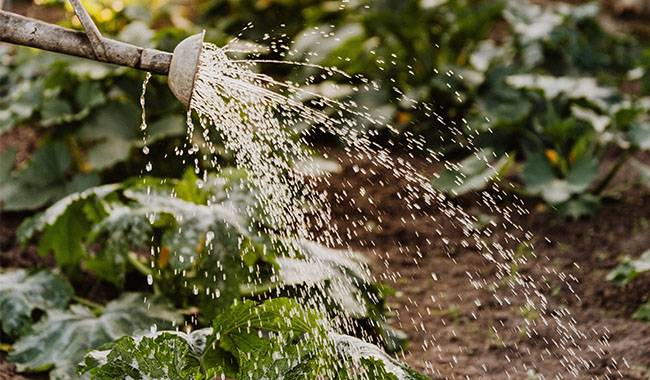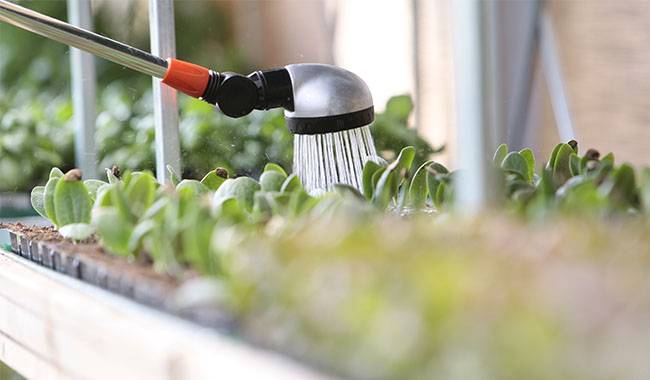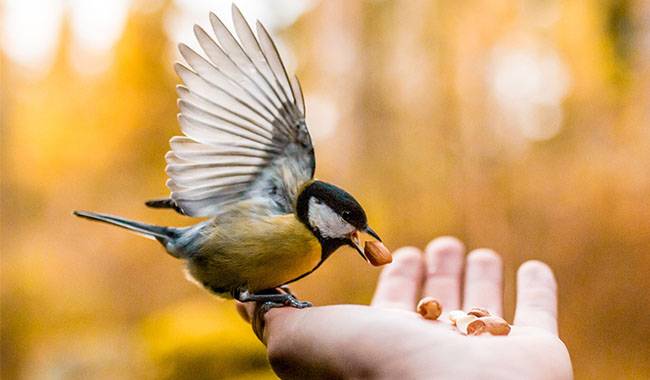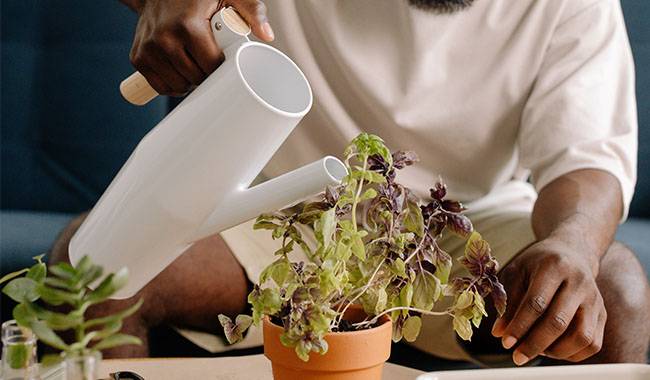
The importance of irrigation cannot be overemphasized. However, good irrigation involves more than just watering the soil daily; it also requires a combination of crop characteristics and irrigation techniques and a smart approach that can often save irrigation water. It’s about practices that help retain soil moisture. It is about combining crops through similarities in agronomic techniques. This article describes watering tips, the optimal amount of watering, rules for watering… etc.
METHODS OF IRRIGATION
There are different methods of irrigation. Which method you can choose depends on the possibilities of planning and organizing your plot, the type of soil, and the crop. In general, watering is distinguished by the type of water supply: surface irrigation, sprinkler, drip, and underground irrigation.
Surface irrigation
It is irrigation along furrows, including circular ones (around tree holes or bushes), as well as checks and bowls. It is appropriate when the surface of the plot is flat, and the soil has sufficient permeability.
Longitudinal furrow irrigation
Longitudinal furrow irrigation is the most common. It is used for crops grown in straight lines and is best suited for seedbeds with minimal slope (otherwise, the water either flows too fast and does not have enough time to soak the soil, or stagnates at the beginning of the furrow, again not ensuring uniform wetting).
In this type of irrigation, the depth of the furrow can vary from 4-6inch (10-15 cm). The distance between furrows should be 20-24inch (50-60 cm) on loamy soils, 24-30inch (60-80 cm) on loamy soils, and 30-40inch (80-100 cm) on clay soils. The reason for this is that on light soils, water mostly flows to the bottom of the furrow, while on heavy soils, water is evenly distributed in all directions.
Watering with a bowl
Bowl irrigation is used in gardens and involves filling the space around a shrub or tree trunk with water enclosed by a ring of soil. It is suitable for areas where soil permeability is poor. The size of the watering area should then be equal to the circumference of the tree canopy.
Sprinkling
A less popular method of watering. It consists of crushing a stream of water with a head into droplets, which is achieved by using different nozzles.
The advantages of this type of irrigation are faster and more thorough soil soaking, the possibility of irrigating areas with complex microtopography or high slopes, low labor costs, water savings of 15-30% (compared to furrow irrigation), and the possibility of full mechanization.
Sprinkling is good for light soils and areas with perennial grasses but not for heavy soils. Water on clay soils does not penetrate well, so puddles and drips form and trigger erosion. Another disadvantage is that it can only soak 20inch (50cm) on heavy soils and 24inch (60cm) on light soils, which is important when watering orchards and vineyards, which need to soak 40inch (100cm).
Drip irrigation
This type of irrigation supplies water in the form of droplets in the area where the plant roots accumulate the most and gradually distribute it in all directions. This type of irrigation is carried out by means of special drip heads, taking into account the irrigation norms. The number of drip heads is calculated depending on the irrigated crop, soil type, plant size, and planting pattern (for mature trees, usually several drip heads, for young trees, shrubs, and vegetable crops – one per plant).
The obvious advantage of drip irrigation is that it can be applied on uneven areas, on terrain with significant slopes, on most soil types, and on most crops. Savings in irrigation water can be as high as 80%. The main disadvantage of this method is the tendency to clog the system with solids in the water.
Soil irrigation
This method of irrigation is still little known, but it is quite promising because it belongs to the most economical category. It consists of the fact that water is pumped underground and directly into the root zone through special humidifier pipes. This provides a minimal loss of water evaporation, reduces the growth of weeds (because most of their seeds are in the upper layer, not in the moist layer), and creates optimal conditions for plant nutrition.
TYPES OF IRRIGATION

In addition to basic irrigation methods designed to maintain optimal soil moisture, there are irrigation methods with additional functions. These include refreshing irrigation, fertilization with watering, damping off (or winter watering), and frost protection.
Fresh watering
This type of watering is watering when the temperature remains high for a longer period of time. During such periods, the plants evaporate a lot of water, and therefore the water content of the plant tissues is strongly reduced, which leads to disturbance of important processes.
In hot periods, refreshing irrigation is carried out by means of fine mist sprays at intervals of 5 minutes to 1 hour. Misting allows water droplets to remain on the plant surface, restoring its moisture content and, through gradual evaporation, cooling its tissues and surface air layer.
This can be accomplished by using special nozzles or by using a sprayer (more labor-intensive).
Fertilization with irrigation
This type of watering is more economical than watering and fertilizing alone. This is because nutrients dissolved in water penetrate the root zone faster and are better absorbed by the plant.
This is accomplished by adding previously dissolved or injected fertilizer to the irrigation water. The depth of the fertilizer is controlled by the time of application: the solution is applied at the end of the watering if the fertilizer needs to be applied to the topsoil or at the beginning if it is deeper.
What can be applied at the same time as irrigation water? Fermented poultry manure, slurry, grass or composted tea, potash, ammonium nitrate, etc. The ratio should be 1:10 (with water) for organic fertilizers and 1:100 for mineral fertilizers, as plants can be burned at stronger concentrations.
Fertilizing while watering is most often done by furrow irrigation or with a watering can. If sprinkling is used, ensure that the plants are rinsed with water afterward.
CHARACTERISTICS OF IRRIGATION WATER
Not all water has a positive effect on plants. On the contrary, there are recommendations regarding the temperature and quality of irrigation water.
Very cold water or water that is too hot has a detrimental effect on the function of soil microorganisms and the ability of the root system to absorb water. In addition, watering with ice or hot water can expose plants to temperature shocks that cause them to wilt and sometimes defoliate. This response is due to the fact that stress inhibits the function of the root apparatus. At the same time, the transpiration process (evaporation of water through the leaves) remains at the same level of intensity.
Therefore, the temperature of the irrigation water should be oriented towards the optimum soil temperature most favorable for plant development, thus corresponding to 59-77°F (15-25°C). Therefore, if the irrigation water comes from a well or borehole, it must be preheated in an appropriate container installed at the highest point of the plot.
The quality of the irrigation water is equally important. Irrigation water with high salt concentration (high salinity is usually found in groundwater and mineral water) and water containing a high percentage of suspended matter (dirty river or lake water) must not be used. Water quality can be evaluated by laboratory tests with sedimentation or chemical purification on an indicator basis or by taking water from the tap, as it usually has an average value of salts and suspended matter. However, even here, there is a “downside” – the presence of chlorine and rather low temperatures, but again, sedimentation helps to cope with them.
THE OPTIMAL AMOUNT OF WATERING
Other dangers of watering are underwatering and overwatering. The former does not allow enough water to saturate the root zone, so the concentration of the soil solution rises sharply, and the plant no longer gets the nutrients it needs. In addition, frequently wetting only the top layer of soil causes most plants’ roots to concentrate on the surface so that they do not receive enough water and nutrients.
Overwatering over-saturates the soil, which also impairs the conditions for root absorption activities and leads to plant depression. Too much water reduces the amount of oxygen in the soil, increases the proportion of carbon dioxide, destroys root hairs (which absorb water and trace elements), and increases the risk of rot.
Constant lack of water, as well as frequent over-watering, reduces the absorption surface of the roots, leading to shriveling, leaf loss, inhibition of growth processes, reduction in the quantity and quality of yields, and in berry and fruit crops, reduction in winter hardiness.
How to determine the optimal irrigation rate? In agronomy, it is calculated by means of a special formula based on continuous observation of soil conditions. Of course, in vegetable garden conditions, no one would do this. But you can still follow certain rules.
The simplest is to know how deep you have to soak the soil under this or that crop. The depth is 24inch (30 cm) for vegetable crops – 2-6inch (5-15 cm) in the seedling stage, 13-16inch (35-40 cm) for strawberries, 16inch (40 cm) for raspberries, 20inch (50 cm) for currants and 40inch (100 cm) for fruit and vine crops.
In addition, plants have different water needs at different times of their lives. A steady supply of water is most needed during germination and flowering, but at the end of the growing season, plants’ water needs drop to a minimum.
CROP CHARACTERISTICS
When watering your garden, it is also important to take into account the specific characteristics of individual crops.
For example, watermelons, melons, squash, corn, forage beans, and legumes have the ability to extract water from deep in the soil and fall into the category of heat-tolerant plants. Most spicy herbs also fall into this category.
Carrots and onions are particularly demanding of irrigation in the first half of the growing season, as too much water can later damage the quality of their crops.
Cucumbers, cabbage, radishes, lettuce, peppers, and eggplants require constant soil moisture. Potatoes must be watered during the flowering period. Tomatoes, knowing how to adapt to moisture deficiencies, prefer to be watered below the roots.
Within the same crop, different varieties also differ in terms of moisture. Early-maturing varieties have the highest requirements, while late-maturing varieties have lower requirements.
There are also preferences among garden plants. Strawberries are the most sensitive to water, followed by black currants, raspberries, gooseberries, red currants, plums, apples, pears, and cherries. However, seedlings of fruits and drupes grown under regular watering require more water than seedlings that initially have to adapt to their deficiencies.
GENERAL IRRIGATION RULES
If you reduce all the watering rules to a single list of recommendations, you will get the following results.
- It is better to water plants in the early morning (before the heat) or in the late evening (on cold nights, morning should be preferred).
- Watering must be timely and regular.
- Spring irrigation should be oriented towards a shallow – about 4inch (10cm) soil immersion depth, as the water stored in the ground is still available to the plants during this period.
- The higher the temperature regime, the higher the watering rate.
- On cloudy days, watering should be reduced, but you should not rely on rain.
- From seedling emergence to flowering, plants are most sensitive to water shortages, so neglecting regular irrigation during this period is particularly dangerous.
- The higher the planting density, the more watering should be provided.
- Crops grown on sandy soils require more frequent watering.
- Plants need not only water but also oxygen for the roots to work effectively, so it is necessary to prevent the formation of soil crusts by loosening the soil after irrigation, which also helps to retain moisture in the soil.
- In addition to loosening the soil, mulching helps to retain soil moisture.
HOW CAN I CONSERVE WATER?
To conserve water, it is important to know and follow certain rules.
- Take care to retain snow and collect melted rainwater in specially designated containers.
- Water sprouts at the right time whenever there is natural moisture in the soil after winter.
- Water infrequently but heavily so that the root system can develop deeply.
- After watering, cover or loosen the soil by breaking up the capillaries of the topsoil (agricultural fibers can be used as mulch film).
- Choose the most economical way of irrigation under the given conditions: on flat land – furrowing, sloping land – sprinkling, or relatively new technologies – drip, spot, subsurface irrigation.
The combined use of all these technologies can reduce the amount of irrigation water used in the season up to 50-60%, and in rationing (e.g., using drip irrigation) up to 80%.
More Related Information About Watering Tips







